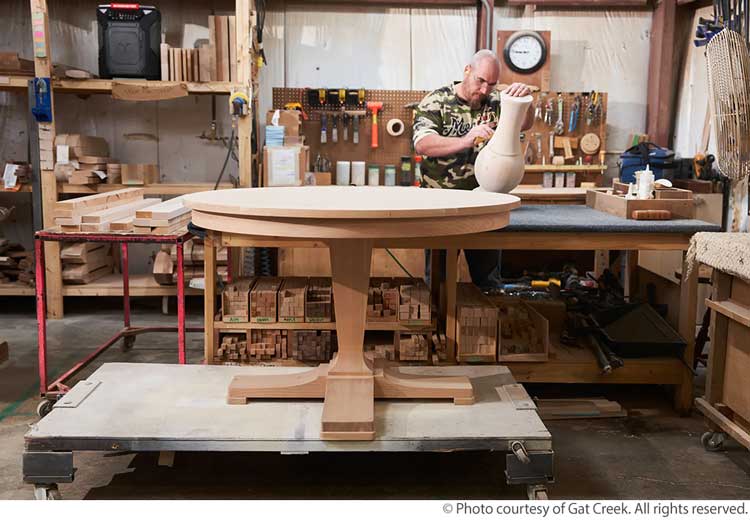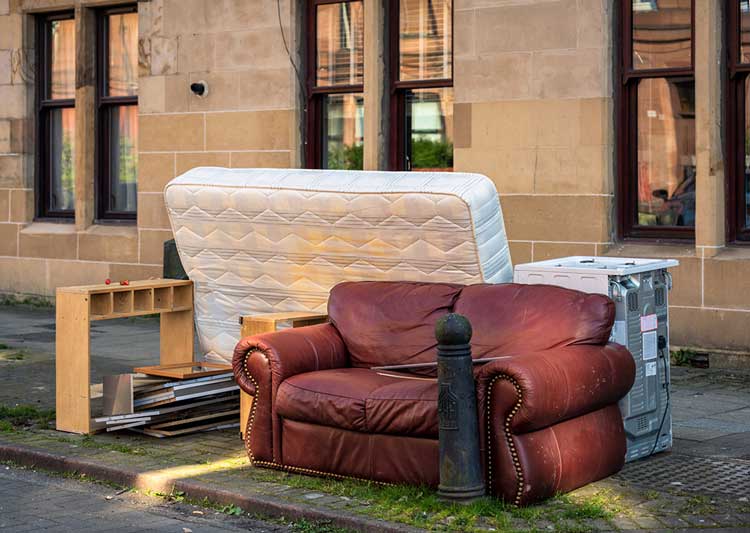Why Is Furniture So Bad Now?
Last updated November 2024

If you walk into a high-end vintage furniture store, walnut dining tables gleam, the drawers on Mad Men-era dressers glide like butter, and everything feels more thoughtfully designed and better built than anything hanging out on modern showroom floors. These days, order an end table online or try to find a non-particle board bed for your kid at a furniture store, and you may feel like you’ve fallen into a morass of junk—even from supposedly higher-end chain stores. So why has furniture quality gone so downhill?
A generation or two ago, Americans bought sofas, dining sets, and four-poster beds, intending to keep these pieces their whole lives. (So that’s why Grandma’s house seems trapped in the Nixon era!) It helped that the furniture quality tended to be high: hardwood construction, dovetailed drawers, sofas built like cushy tanks.
“Most of the furniture that people purchased up through the early 2000s was made in America,” said Warren Shoulberg, a veteran home furnishings journalist who writes for the industry bible, Business of Home. “It generally came from family-owned companies that had been doing this for a very long time, with experienced, expert workforces. There was heritage and craftsmanship there, but you paid for it.”
But after the U.S. gave China permanent Most Favored Nation status in 2001, things changed. The trade agreement helped push most manufacturing—clothing, electronics, and, yep, furnishings—overseas, where cheaper workforces and cheaper raw materials meant companies could charge lower prices and make higher profits.
This flooded the market with both fast fashion and what you might call “fast furnishings”—poorly made, often assemble-it-yourself case goods, usually starring softer wood species, MDF, or particle board. “It was a whole different dynamic, with factory workers who might’ve been making shoes a year ago making furniture,” says Shoulberg. “There was a learning curve.”
The manufacture of upholstered goods has mostly remained stateside, primarily in North Carolina and Virginia, since ferrying a sectional from Asia to North America was—and still is—prohibitively expensive.
Cheaper furniture, churned out in far less time by overseas factories, meant consumers could buy more stuff, more often, for less money. It changed how people thought about outfitting their homes and gave rise to disposable furniture destined for landfills, not heirloom status. Think toddler beds meant to expire by the time your kid is toilet trained, $100 dining chairs cushioned with low-cost foam, and sofas covered in cheap velvet dyed this year’s Pantone “it” color.
Home decorating shows, advertising, and social media content fueled peoples’ desire to constantly switch out their bookcases, cocktail tables, and bedframes. “American consumers, as with many products from clothing to electronics, loved spending less to get more,” said Shoulberg.

So how can you find topnotch long-lasting furnishings in this confusing, changed market? The answers aren’t simple. Even a “Made in America” label isn’t always a hallmark of quality—there are numerous factories in Mississippi churning out inexpensive sofas with injection molded plastic frames. And not all furniture created in Asia is of poor quality.
But, in general, furniture manufactured in America (particularly in North Carolina and Virginia) and Europe tends to be of higher caliber (with higher prices to match) than Asian imports. Hardwoods with recognizable names—cherry, walnut, oak—last longer and age better than plywood or tropical woods (mango, rubber). Custom furnishings, particularly upholstery, are also generally better crafted than prefab stuff.
Pieces you have to put together yourself—we’re looking at you, IKEA and World Market—are often shorter-lived and less durable than already built items. In industry parlance, these DIY pieces are known as ready-to-assemble (RTA), knock-down (KD), or kit furniture. Plus, the lifespan of such furnishings is also somewhat dependent on your ability to wield a hex key or Allen wrench. Though, said Shoulberg, “IKEA puts out a good product for the money.”
In simple terms, “home furnishings are like many other consumer goods, where quality is often dependent on price point,” said Pat Bowling, a spokesperson for the American Home Furnishings Alliance, a lobbying group advocating for American manufacturers.
Still, Americans have been conditioned to think that $100 for a dining chair or $300 for a headboard is a good deal. “Honestly, if you’re buying at West Elm and expecting a sofa that will last for decades, it’s like thinking Old Navy sells designer clothes,” says Arlington, Va., interior designer Nicole Lanteri. “People have an unrealistic idea of what furniture costs. Paying $5,000 for a sofa is not a lot.”
Our store ratings and guide to spotting high-quality furniture should help you navigate the furniture-buying process.


